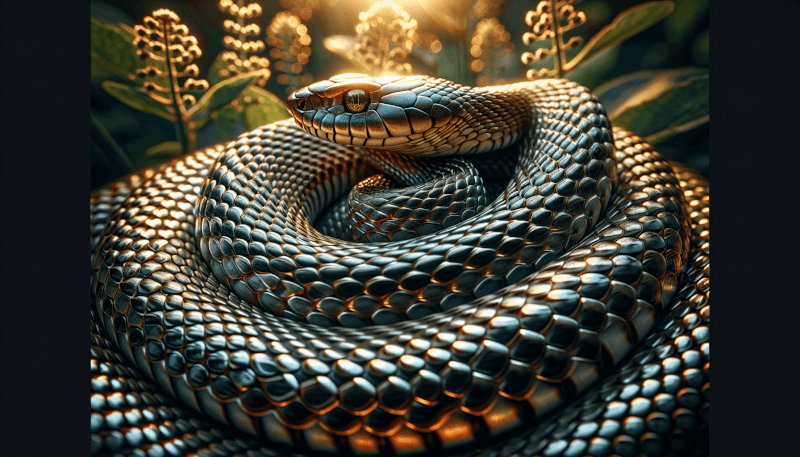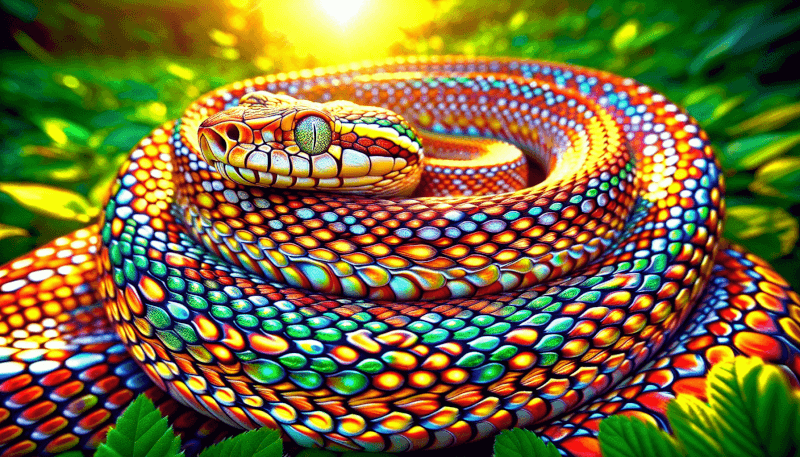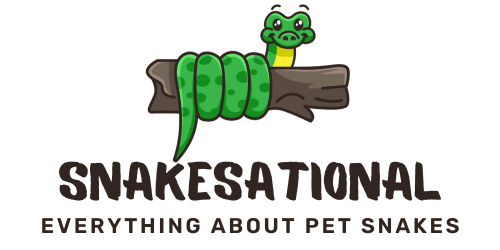Imagine walking through the lush forests of Minnesota, surrounded by tall trees and the sounds of nature. As you tread lightly on the moss-covered ground, you catch a glimpse of movement out of the corner of your eye. Curiosity piques as you slowly approach the source, and to your amazement, you discover yourself face-to-face with a stunning diversity of snake species. From the shy and elusive timber rattlesnake, known for its distinctive rattling sound, to the striking and colorful eastern hog-nosed snake, Minnesota is home to a wide variety of captivating snake species. In this article, we will explore the fascinating world of Mn Snake Species, shedding light on their unique attributes and importance within the ecosystem.

Introduction
Overview of Mn Snake Species
Minnesota, known as the Land of 10,000 Lakes, is home to a diverse array of snake species. These fascinating reptiles play an important role in the state’s ecosystems, contributing to the balance of predator-prey relationships and controlling rodent populations. From the common to the rare and endangered, Minnesota boasts a variety of snake species that have adapted to different habitats across the state. In this article, we will delve into the world of Minnesota’s snakes, exploring their characteristics, habitats, feeding habits, and interactions with humans.
Common Snake Species in Minnesota
Garter Snakes
One of the most recognizable and abundant snake species in Minnesota is the Garter Snake. These slender snakes are typically green or brown, with distinctive longitudinal stripes running down their bodies. Garter snakes are non-venomous and can be found in a wide range of environments, from backyards to wetlands. They play a vital role in controlling pest populations and are often regarded as harmless companions.
Bullsnakes
Another common snake species found in Minnesota is the Bullsnake. These large, heavy-bodied snakes can reach up to six feet in length. Bullsnakes have a unique ability to mimic the appearance and behavior of rattlesnakes, presenting a formidable deterrent to potential predators. They are non-venomous and primarily feed on small mammals, making them valuable allies in rodent control.
Common Water Snakes
As the name suggests, Common Water Snakes are often found in or near bodies of water, such as lakes, ponds, and marshes. These semi-aquatic snakes have adapted to their watery habitats, with keeled scales that aid in swimming. Common Water Snakes are non-venomous and play a crucial role in maintaining the ecological balance of aquatic ecosystems by controlling fish and amphibian populations.
Rat Snakes
Rat Snakes, also known as Pantherophis, are a group of non-venomous snakes found in Minnesota. These snakes are excellent climbers and can be observed in a range of environments, including forests, rocky outcrops, and even the outskirts of suburban areas. Rat Snakes are efficient predators and help to control rodent populations, earning them a place of importance in the state’s ecosystems.
Rare and Endangered Snake Species
Eastern Massasauga Rattlesnake
The Eastern Massasauga Rattlesnake is a rare and endangered snake species found in Minnesota. These snakes prefer wetland habitats, such as swamps and bogs, where they hunt for small mammals and amphibians. Despite their status as a venomous snake, the Eastern Massasauga Rattlesnake is not aggressive towards humans and will generally retreat rather than strike when encountered. These snakes face numerous threats, including habitat loss and illegal collection, making conservation efforts crucial for their survival.
Western Ratsnake
The Western Ratsnake, also known as the Black Ratsnake, is another rare snake species in Minnesota. These large, non-venomous snakes can grow to impressive lengths of up to seven feet. Western Ratsnakes primarily inhabit forested areas, where they feed on rodents, birds, and eggs. Unfortunately, habitat loss and fragmentation, as well as road mortality, pose significant challenges to the conservation of Western Ratsnakes in Minnesota.
Great Plains Ratsnake
The Great Plains Ratsnake, also known as the Yellow-bellied Ratsnake, is a rare and secretive snake species found in southeastern Minnesota. These snakes prefer grassland and prairie habitats, where they aid in controlling rodent populations. Great Plains Ratsnakes are often encountered near rock outcrops and grassy areas. Due to habitat loss and degradation, this species is considered vulnerable in Minnesota, highlighting the need for conservation efforts to protect these elusive reptiles.
Habitats and Distribution
Woodlands and Forests
Snakes in Minnesota can be found in a range of habitats, with woodlands and forests being home to various species. These areas provide ample cover, with fallen logs, leaf litter, and dense vegetation offering suitable hiding spots for these reptiles. Rat Snakes and Western Ratsnakes, in particular, thrive in forest environments, where they can utilize their climbing abilities to explore the trees and hunt for prey.
Grasslands and Prairies
Minnesota’s grasslands and prairies are essential habitats for snake species such as the Great Plains Ratsnake. These open landscapes provide abundant prey opportunities, with rodents and birds being common targets for these snakes. Great Plains Ratsnakes navigate through tall grasses, utilizing their ambush techniques to capture their unsuspecting prey.
Wetlands and Marshes
Wetlands and marshes are vital habitats for snake species like the Eastern Massasauga Rattlesnake. These snake species are specially adapted to thrive in the moist environments provided by swamps, bogs, and marshes. The diverse vegetation and ample water sources in these habitats attract a variety of prey, making them ideal hunting grounds for these reptiles.
Rivers and Lakes
Snakes are frequently encountered along rivers and lakes in Minnesota. Common Water Snakes, as their name suggests, favor these habitats due to the abundance of fish and amphibians. Their ability to swim enables them to hunt efficiently in the water, while also taking advantage of nearby rocky outcrops or log piles for basking and shelter.

Physical Characteristics
Coloration and Patterns
The coloration and patterns of snakes in Minnesota vary across species. Garter Snakes often exhibit green or brown hues, with distinct longitudinal stripes running down their bodies. Bullsnakes possess a unique pattern resembling that of rattlesnakes, with tan or yellowish backgrounds and dark blotches. Rat Snakes come in a variety of color patterns, ranging from black to gray with blotches or stripes, allowing them to blend into their surroundings. Common Water Snakes tend to have dark-colored bodies, with banded patterns or blotches.
Size and Length
In terms of size, snakes in Minnesota range from the smaller Garter Snakes, which typically measure around two to three feet in length, to the larger species like Bullsnakes and Western Rat Snakes, which can attain lengths of up to six to seven feet. The Eastern Massasauga Rattlesnake, on the other hand, is more compact and generally measures two to three feet long. Great Plains Ratsnakes can grow to similar lengths as their Western counterparts, making them some of the region’s longest snake species.
Venomous vs Non-Venomous
It is important to note that while some snake species in Minnesota, such as the Eastern Massasauga Rattlesnake, are venomous, the majority are non-venomous. Venomous snakes play a significant ecological role in controlling prey populations and maintaining the delicate balance of ecosystems. However, it is crucial to exercise caution and refrain from handling or disturbing any snake species without proper knowledge and expertise.
Feeding Habits
Diet of Mn Snake Species
Snakes in Minnesota have a diverse diet that varies depending on their species and habitat. Garter Snakes primarily feed on earthworms, slugs, amphibians, and small fish. Bullsnakes, being constrictors, consume a variety of small mammals, such as mice, rats, and voles, as well as birds and their eggs. Common Water Snakes feed on fish, amphibians, and occasionally small mammals. Rat Snakes have a broad diet that includes rodents, birds, eggs, and reptiles.
Predatory Techniques
Different snake species employ various predatory techniques to capture and consume their prey. Garter Snakes are adept at capturing and swallowing small prey whole, using their speed and agility to catch unsuspecting victims. Bullsnakes, being constrictors, subdue their prey by coiling their bodies around them and suffocating them before swallowing them whole. Common Water Snakes ambush fish and amphibians in the water, using their sharp teeth to grasp and restrain their prey. Rat Snakes are skilled climbers and stalkers, using their excellent eyesight and agility to pursue and capture their prey.
Reproduction and Life Cycle
Breeding Season
Snakes in Minnesota typically have a breeding season that varies based on species and environmental conditions. Garter Snakes begin their breeding activities in the spring, once temperatures warm up and hibernation ends. Bullsnakes typically mate in the late spring or early summer, following the completion of their winter hibernation. Eastern Massasauga Rattlesnakes undergo their breeding rituals in the late summer or early fall, with males engaging in elaborate courtship displays to attract females.
Egg Laying
Most snake species in Minnesota are oviparous, meaning they lay eggs to reproduce. After mating, female snakes seek out suitable locations to lay their eggs. Garter Snakes and Bullsnakes lay their eggs in hidden spots, such as rotting logs or underground burrows. Eastern Massasauga Rattlesnakes, on the other hand, select moist environments like wetlands or marshes for egg deposition.
Parental Care
Once the eggs are laid, snakes in Minnesota do not exhibit parental care. The incubation period varies among species but generally lasts several weeks to a few months. After hatching, young snakes are self-sufficient and must rely on their instincts and innate behaviors to survive.
Interaction with Humans
Importance of Snakes in Ecosystem
Despite their often-misunderstood reputation, snakes play a vital role in Minnesota’s ecosystems. As predators, they help to control populations of rodents, which can cause damage to crops and spread disease. Snakes also contribute to the overall biodiversity of the state, maintaining a delicate balance between different species in their respective habitats.
Snake Conservation Efforts
Conservation efforts are crucial to preserving Minnesota’s snake species. Several organizations and initiatives work to protect native habitats, raise awareness about the importance of snakes, and conduct research to better understand the needs and populations of various snake species. These efforts help ensure the long-term survival of both common and rare snake species in the state.
Human-Snake Conflicts
While snakes are generally harmless and prefer to avoid human contact, conflicts can occasionally arise. Human-snake encounters often occur when snakes wander into residential areas or when individuals unknowingly disturb snake habitats. It is important for both humans and snakes to coexist peacefully, with education and awareness serving as key factors in minimizing conflicts. In such situations, it is advisable to contact local wildlife authorities or snake experts for professional assistance.
Tips for Snake Encounters
Identifying Venomous Snakes
When encountering a snake in Minnesota, it is important to determine whether it is venomous or non-venomous. Venomous snakes, such as the Eastern Massasauga Rattlesnake, have distinct characteristics that can aid in identification. Triangular-shaped heads, vertical pupils, and heat-sensitive pits on the face are common features found in venomous snakes. However, it is always best to exercise caution and avoid handling any snake unless you have proper training and knowledge.
Keeping a Safe Distance
If you encounter a snake in the wild or in your backyard, it is best to keep a safe distance and observe from afar. Remember that snakes are generally more afraid of humans than we are of them. Avoid making sudden movements or attempting to touch or capture the snake, as this may startle or agitate it. Appreciating these fascinating creatures from a safe distance is the best way to coexist peacefully with snakes in Minnesota.
Snakebite First Aid
While snake bites are rare in Minnesota, it is essential to be prepared in case of an emergency. If you or someone else is bitten by a snake, it is crucial to seek medical attention immediately. While waiting for professional help, keep the affected person calm and still. Do not attempt to suck out the venom or apply a tourniquet, as these outdated methods can do more harm than good. Instead, immobilize the bitten area and clean the wound with mild soap and water.
Conservation Status
Protecting Mn Snake Species
Preserving the natural habitats and ecosystems of Minnesota is vital for the long-term survival of snake species in the state. Protecting forests, grasslands, wetlands, and other snake habitats helps ensure the availability of suitable environments for snakes to thrive. Efforts should focus on conservation planning, habitat restoration, and the establishment of protected areas to safeguard these unique and often misunderstood creatures.
Threats and Challenges
Several threats and challenges pose risks to the conservation of Minnesota’s snake species. Habitat loss and fragmentation, caused by urbanization, agriculture, and other human activities, disrupt the natural habitats and connectivity required by these reptiles. Additionally, climate change, pollution, illegal collection, and road mortality are all factors that contribute to the decline of snake populations. Overcoming these challenges requires collaboration between government agencies, researchers, conservation organizations, and the public to implement effective conservation strategies.
In conclusion, the snake species in Minnesota contribute to the state’s ecological balance and deserve appreciation and protection. From the common Garter Snakes to the rare and endangered Eastern Massasauga Rattlesnake, each species plays an important role in maintaining the delicate harmony of their respective habitats. By understanding and respecting these fascinating creatures, we can coexist peacefully with snakes and contribute to their conservation.


